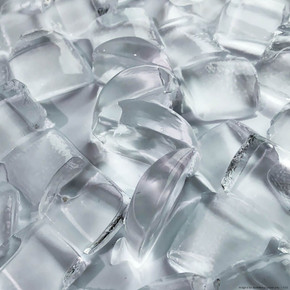





Bin Capacity: Approx. 10kg
Underbench Ice Maker
Features:
A daily wipe down of the external surfaces should be performed in order to keep the body clean, it's enough to use a cloth soaked into a specific chlorine-free product suitable for stainless steel.
Recommended at least once a week to maintain proper sanitation, considering that the ice produced is administered to users. Remove all ice from the bin and clean the inside with a sponge moistened with warm water and a non-acidic cleaning agent. Rinse with clean water and properly dry it.
Cleaning and maintenance of water filters should be carried out a minimum of every three months. This includes changing the filter cartridge. It may be necessary to do this more often depending on your water quality as this can exhaust the cartridge quicker.
In order to make the most of your ice maker in terms of performance and durability, it's necessary to periodically clean the air condenser of the machine. This should be carried out by a licensed technician at a minimum of every six months, more often if the machine is subject to high levels of dust, exhaust fumes, etc.
Recommended at a minimum of at least twice a year, to remove the presence of limescale and / or mould and / or algae that inevitably form over time from the entire water circuit and from all parts in contact with the water. The frequency of cleaning depends on the hardness of the water, so it's possible that in the presence of particularly “hard” waters, rich in calcium, it's necessary to carry out a more frequent thorough cleaning of three to four times a year.
N.B Images are for illustrative purposes only. Specifications are subject to change without notice.
Bin Capacity: Approx. 10kg
Underbench Ice Maker
Features:
A daily wipe down of the external surfaces should be performed in order to keep the body clean, it's enough to use a cloth soaked into a specific chlorine-free product suitable for stainless steel.
Recommended at least once a week to maintain proper sanitation, considering that the ice produced is administered to users. Remove all ice from the bin and clean the inside with a sponge moistened with warm water and a non-acidic cleaning agent. Rinse with clean water and properly dry it.
Cleaning and maintenance of water filters should be carried out a minimum of every three months. This includes changing the filter cartridge. It may be necessary to do this more often depending on your water quality as this can exhaust the cartridge quicker.
In order to make the most of your ice maker in terms of performance and durability, it's necessary to periodically clean the air condenser of the machine. This should be carried out by a licensed technician at a minimum of every six months, more often if the machine is subject to high levels of dust, exhaust fumes, etc.
Recommended at a minimum of at least twice a year, to remove the presence of limescale and / or mould and / or algae that inevitably form over time from the entire water circuit and from all parts in contact with the water. The frequency of cleaning depends on the hardness of the water, so it's possible that in the presence of particularly “hard” waters, rich in calcium, it's necessary to carry out a more frequent thorough cleaning of three to four times a year.
N.B Images are for illustrative purposes only. Specifications are subject to change without notice.


